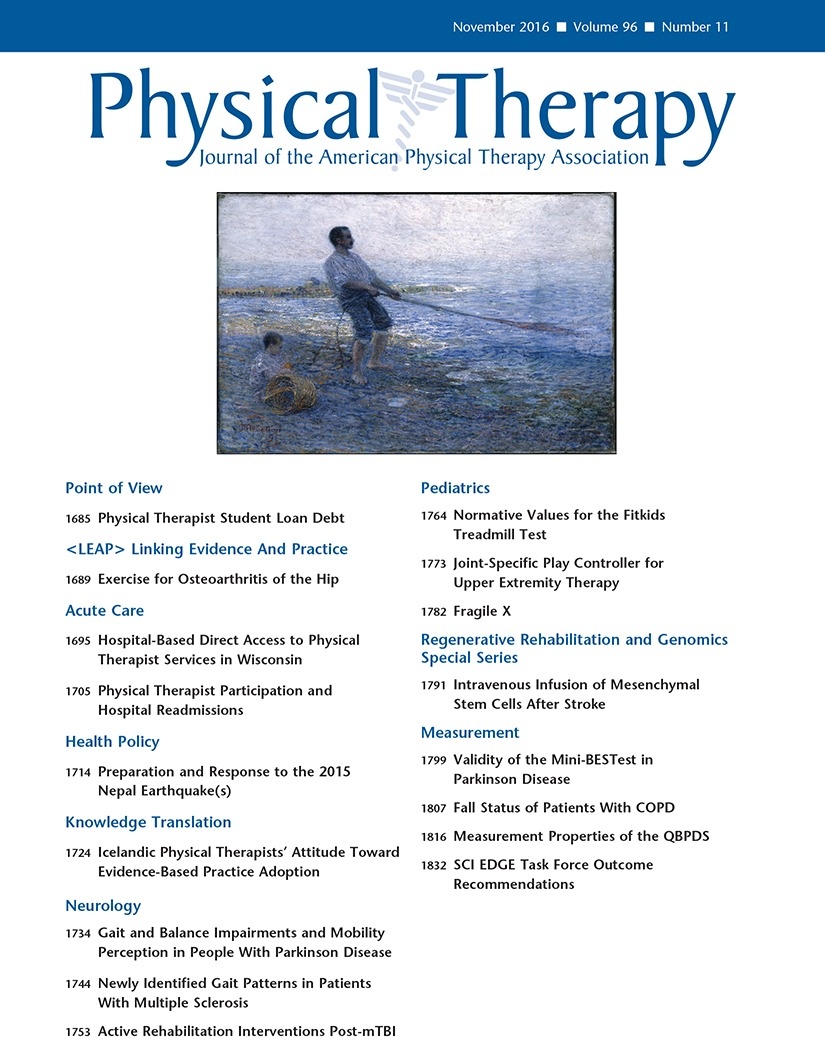
Godelieve Denys-Struyf (GDS) compared to standard physical therapy for LBP

Godelieve Denys-Struyf (GDS) compared to standard physical therapy for LBP
Effectiveness of the Godelieve Denys-Struyf (GDS) method in people with low back pain: cluster randomized controlled trial.
Phys Ther. 2015 Mar;95(3):319-36.Did you know you're eligible to earn 0.5 CME credits for reading this report? Click Here
Synopsis
461 patients (342 patients completed follow-up) with low back pain (LBP) received a short education program, and were randomized to receive either Godelieve Denys-Struyf (GDS) sessions, or the standard physical therapy sessions typically offered in the Spanish National Health Service (SNHS). Patients in the GDS group were either administered individual sessions and group sessions (GDS-I), or only ...
To view the full content, login to your account,
or start your 30-day FREE Trial today.
FREE TRIAL
LOGIN
Forgot Password?
Explore some of our unlocked ACE Reports below!

Learn about our AI Driven
High Impact Search Feature
Our AI driven High Impact metric calculates the impact an article will have by considering both the publishing journal and the content of the article itself. Built using the latest advances in natural language processing, OE High Impact predicts an article’s future number of citations better than impact factor alone.
Continue



 LOGIN
LOGIN

Join the Conversation
Please Login or Join to leave comments.